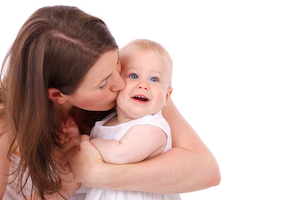Declining fertility in advanced economies is nothing new. Since birth control was approved by the Food and Drug Administration in 1960, at the same time more women were entering the labor force and attending higher education, amid higher inflation, greater unemployment and a weaker economy, birth rates have plummeted significantly, from 3.65 babies per woman in 1959 to 1.73 by 1976, according to World Bank and Bureau of Labor Statistics data.
In the 1980s, as the Great Inflation of the 1970s and early 1980s — brought in large part by a massive uptick in demand by post-World War II Baby Boomers who were entering the labor force, marrying, settling down and purchasing homes at roughly the same time — subsided, so too did fertility rates improve, finally getting back above 2 babies per woman in 1989 and staying there on average until 2009, when the global financial crisis and the Great Recession struck.
Then, fertility again plummeted, even amid lower inflation, albeit higher unemployment, as Millennials made their way through college. But even after the unemployment of the Great Recession had subsided, fertility still kept dropping despite a good economy during the second term of Obama administration and only term of the Trump administration. What changed?
Men and women are not getting married as much. In 1960, the marriage rate for men was 69 percent and 66 percent for women and began plummeting in a continued decades long slump. In 2022, the marriage rate for men was 51 percent and for women 49 percent. Less couples equals less children.
Here, a significant, highly related factor is the level of educational attainment, according to the latest data from the Bureau of Labor Statistics, where a massive gender gap has emerged.
76 million women attended college, including 16.75 million with some college, 12.6 million with associate’s degrees, 28.2 million with bachelor’s degrees and 18.4 million with master’s degrees or above.
Comparatively, only 67.9 million men have attended college, including 16.1 million with some college, 10.87 million with associate’s degrees, 25.25 million with bachelor’s degrees and 15.75 million with master’s degrees or above.
Whereas, there are 42.8 million men who have not gone to college compared with 40.7 million women who have not gone to college. But that’s a shrinking population as Baby Boomers pass away.
As a result, 65 percent of working aged women have attended college at some level, compared with 61.3 percent of men, a trend that is only widening. Recent enrollees to four-year colleges are 1.3 to 1 female to male as of 2019, according to Oksana Leukhina and Amy Smaldone of the Federal Reserve Bank of St. Louis. That’s 56.5 percent to 43.5 percent, female to male in higher education, disproportionate compared to national data, where women make up roughly 52 percent of the population compared to 48 percent for men.
The end result of the gender gap in higher education is women who attend school are less likely to meet their future husbands. This makes decisions to postpone marriage and child-rearing more likely, on top of all the other factors. 76 women attended college or above, versus 67.9 million men. That’s about 8 million potential marriages that never were.
Similarly, men who do not attend college appear to be finding it more difficult to connect with women who did attend college, who may have a preference for men who did attend or who graduated.
This could largely be a financial decision, since higher levels of educational attainment correlate strongly with significantly higher levels of income and lower levels of unemployment, according to Bureau of Labor Statistics data. Even if a hypothetical college graduate female married a no-college male, would it make as much sense for the female to go on maternity leave, resulting in a drop in household income?

The Covid recession only made things worse, with unemployment skyrocketing as 25 million Americans temporarily lost their jobs and fertility hit 1.64 in 2020, barely recovering to 1.66 in 2021 as inflation began creeping up. 2022 might not prove to be any better as inflation peaked at 9.1 percent in June 2022 as couples who are together forestall child-rearing or cancel it altogether.
Ironically, both political parties benefit from this outcome — even if the nation may not as the U.S. goes the way of Japan with lower fertility (where it has reached 1.3 babies per woman), lower economic growth, and eventually, population decline with potential deflation and depression looming when downturns do occur — with Democrats having a strong political interest in women attending college, and Republicans having a strong political interest in men not attending college. Both parties’ messaging in favor and against higher education, respectively, is reflected in these outcomes.
College graduates (51 percent) and those with advanced degrees (62 percent) are more likely to vote Democratic, according to the 2020 CNN exit poll, whereas no-college (54 percent) and associate degrees (50 percent) tending to vote more Republican on the margins.
It breaks down according to race and gender. So, white male graduates vote more Republican, 51 percent to 48 percent, whereas white female graduates vote more Democratic, 54 percent. Minorities vote overwhelmingly Democratic either way, regardless of educational attainment, about 70 percent to 30 percent. And white, no-college degree votes overwhelmingly Republican: 70 to 28 percent for men and 63 percent to 36 percent for women.

But way more women than men go to school, and Republicans are more likely to reject universities, which likely weighs on these outcomes. That is to say, if more Republicans, particularly Republican males, attended college, Democrats’ advantage among college graduates might suffer as the sample normalized. They aren’t, for what it’s worth, and so the gender gap will continue widening.
Overall, with nearly two-thirds (and rising) of women attending college, no-college men could be counting themselves out of the gene pool as dating prospects dwindle through child-rearing ages, even if the ones who do marry will tend to repopulate at higher rates (there is an inverse relationship between income and fertility) but not enough to offset enough to offset the men who don’t get married and the college-educated women who wind up alone, too, driving down fertility further. These no-college men might not be burdened with student loan debt, and so financially it could make sense, but there appears to be a greater risk of winding up alone and without a family to care for.
Robert Romano is the Vice President of Public Policy at Americans for Limited Government Foundation.
To view online: https://dailytorch.com/2023/09/americas-fertility-crisis-will-only-worsen-with-the-college-gender-gap-as-u-s-follows-japan/
